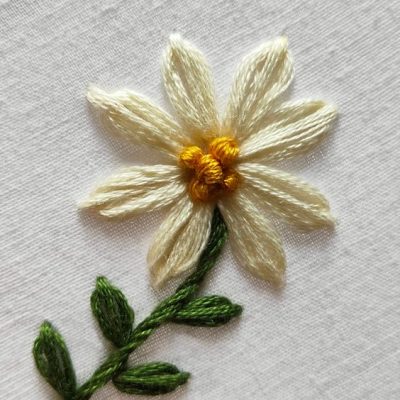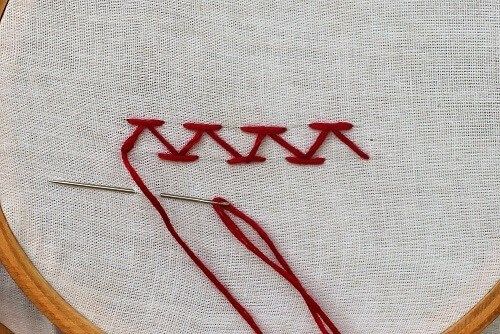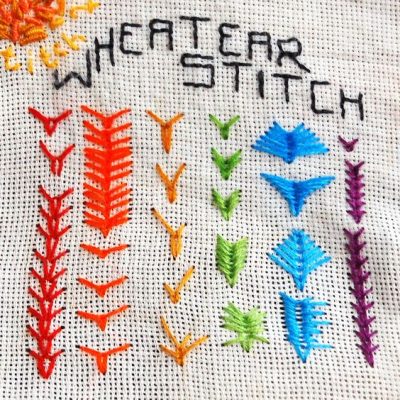Embroidery Sweatshirt, Embroidery Tote Bag
19 Essential Embroidery Stitches: A Guide for Every Needlework Enthusiast
Embroidery, an art form that dates back thousands of years, continues to captivate and inspire crafters worldwide. With a vast array of stitches at your disposal, you can create intricate and stunning designs on fabric. In today post, we’ll explore 20 essential embroidery stitches, each with its unique characteristics and applications. Whether you’re a beginner or an experienced stitcher, mastering these stitches will open up a world of creativity and endless possibilities for your needlework projects.
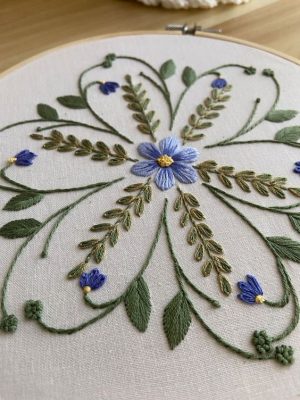
1. Running Stitch:
The running stitch is the simplest and most versatile embroidery stitch, often used as a foundation for more complex designs. It involves creating straight stitches, evenly spaced and running in a straight line. Ideal for outlining and adding texture.
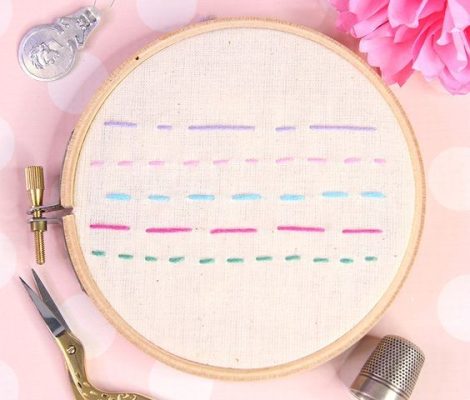
2. Back Stitches:
The backstitch is a strong and precise stitch, perfect for creating continuous and solid lines. It is commonly used for outlining and adding fine details to embroidery designs.
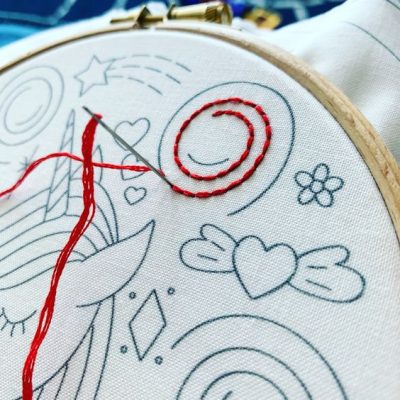
3. Split Stitch:
Similar to the backstitch, the split stitch offers a textured look to your embroidery. It involves stitching through the center of the previous stitch, resulting in a raised appearance.
4. Stem Stitch:
The stem stitch produces a smooth and rope-like line, making it ideal for outlining curved shapes, stems, and even lettering. It creates a delicate and elegant finish.

5. Chain Stitch:
The chain stitch is a decorative and versatile stitch that creates a series of linked loops. It is perfect for borders, outlining, and adding intricate patterns to your embroidery.
6. Satin Stitch:
The satin stitch is used to fill shapes and create solid blocks of color. It produces a smooth and polished finish, making it ideal for floral designs and lettering.
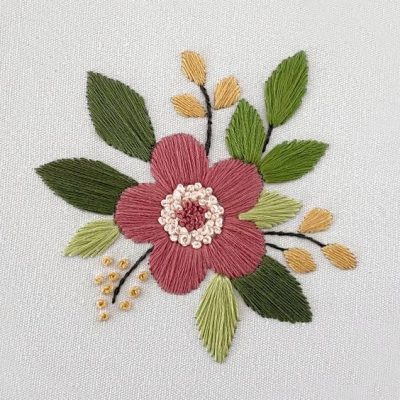
7. Long and Short Stitch:
The long and short stitch is a shading technique used to create smooth color transitions. By alternating long and short stitches, you can achieve a realistic gradient effect, making it perfect for lifelike images and intricate details.
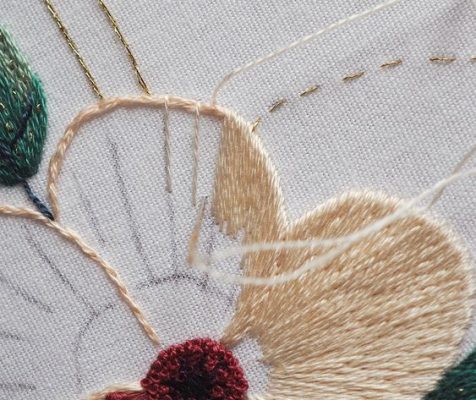
8. French Knot:
The French knot is a delicate and decorative stitch, ideal for adding texture and dimension to your embroidery. It is commonly used for flower centers, stars, and other small embellishments.
9. Lazy Daisy Stitch:
Also known as the detached chain stitch, the lazy daisy stitch creates charming petal or leaf shapes. It is widely used in floral designs and adds a whimsical touch to your embroidery.
10. Fishbone Stitch:
The fishbone stitch is perfect for creating leaf shapes and feather-like patterns. It produces a realistic and dimensional effect, making it an excellent choice for nature-inspired designs.
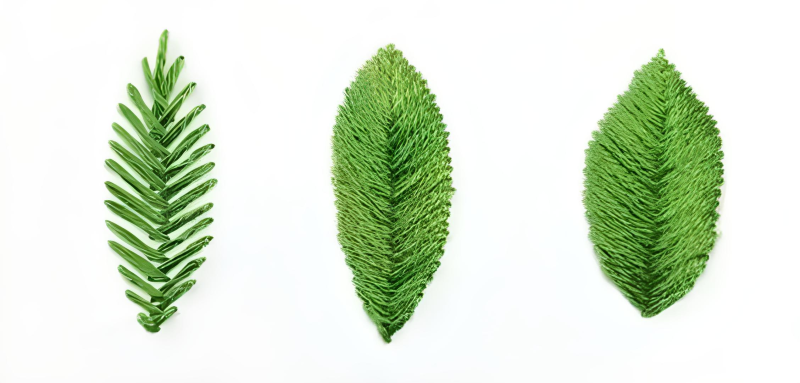
11. Bullion Knot:
The bullion knot is a raised and intricate stitch used for creating textured lines and coiled accents. While it requires patience and practice, it yields impressive results.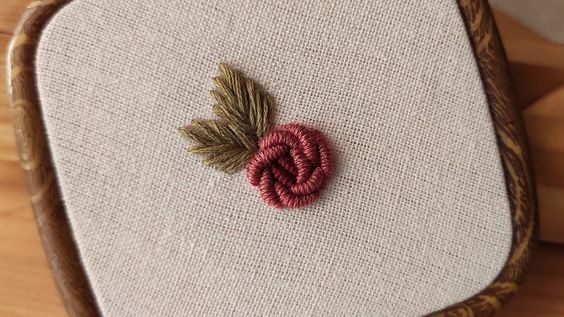
12. Fly Stitch:
The fly stitch is versatile and resembles a “V” shape. It is ideal for creating leaves, wings, and other decorative elements, giving your embroidery a playful and dynamic look.
13. Feather Stitch:
The feather stitch produces a beautiful row of connected “V” shapes, making it perfect for borders, decorative lines, and adding an elegant touch to your designs.
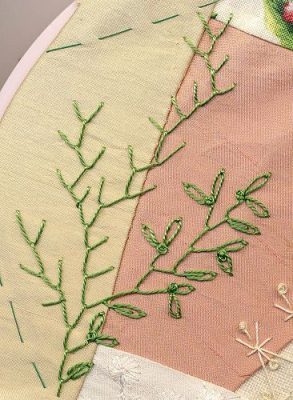
14. Herringbone Stitch:
The herringbone stitch creates a zigzag pattern and is often used for borders, decorative bands, and adding texture to your embroidery.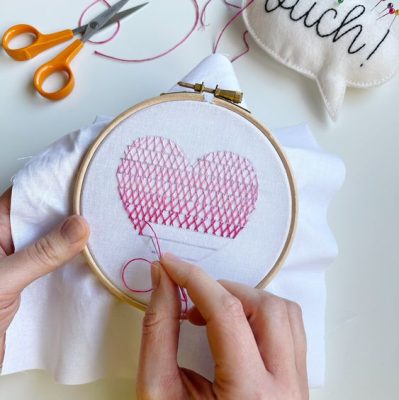
15. Cross Stitch:
A beloved and well-known stitch, the cross stitch involves creating “X” shapes on a fabric grid. It is versatile and allows for detailed and pixelated designs.
16. Chevron Stitch:
The chevron stitch creates a series of “V” shapes forming a chevron pattern. It is excellent for borders and adding geometric elements to your embroidery.
17. Cretan Stitch:
The Cretan stitch is a decorative stitch used for creating textured lines and patterns. It offers a unique and eye-catching look to your designs.
18. Wheat Ear Stitch:
The wheat ear stitch is used for creating wheat-like patterns and is commonly seen in traditional embroidery, particularly for adding delicate details to landscapes and nature scenes.
19. Woven Wheel Stitch:
Also known as the spider web stitch, the woven wheel stitch is used for creating flower centers and decorative circles. It adds dimension and texture to your embroidery.
Conclusion:
Embroidery is a rich and timeless art form, offering a diverse range of stitches that allow you to transform fabric into breathtaking works of art. With this comprehensive guide to 20 essential embroidery stitches, you now have a versatile toolkit to bring your imagination to life. From basic stitches like the running stitch to intricate techniques like the bullion knot and long and short stitch, each stitch offers a unique texture and application. Whether you’re a beginner or an experienced embroiderer, mastering these stitches will elevate your needlework and empower you to create magnificent and awe-inspiring designs. So, pick up your needle and thread, and let your creativity soar in the enchanting world of embroidery—a journey filled with artistry, craftsmanship, and boundless possibilities. Happy stitching!



